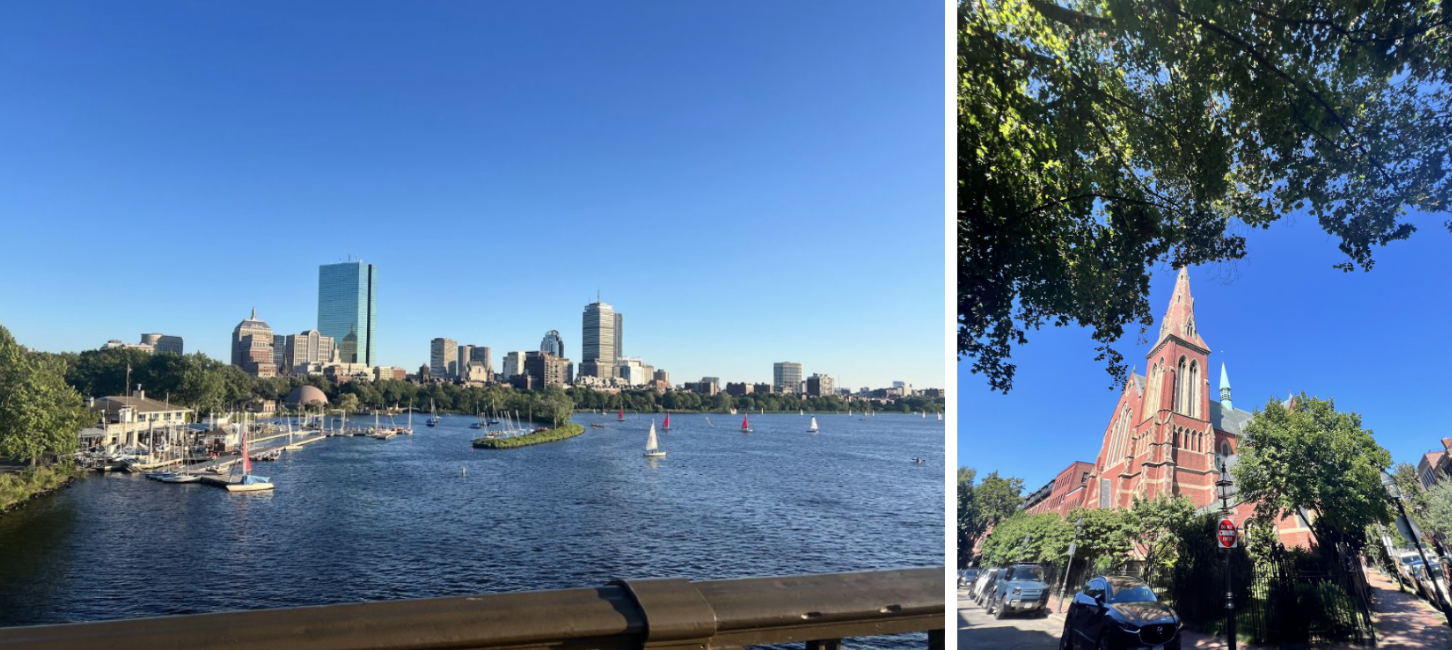From Blueprint to Leadership: Creating and Teaching a VR Escape Maze in Boston
The Project
Being always interested in simulations, I decided to apply this knowlegde in game design. This summer, my Leadership in Action project took me far outside my comfort zone — and across the Atlantic for the first time.
I partnered with the Timothy Smith Network (TSN) in Boston to design and deliver an Unreal Engine 5 (UE5) Escape Maze (LoopLab game) course for high school students. The central challenge we built around was a looping escape maze: a game where the player is stuck in a house, room, or mountain path that resets every 20 seconds. To escape, they must use objects, levers, puzzles, and memory, while relying on movement — crawling, swimming, jumping, and running — to reach the finish line before the reset.
The idea was ambitious: take a professional-grade game engine and transform it into a fun, hands-on course that would empower teenagers to not just play games, but actually build their own. It also sounded straightforward in a proposal, but in practice, it was an exercise in leadership, adaptability, and cultural immersion.

Planning
Preparation began months earlier: meetings with TSN to set learning goals, designing a syllabus, testing UE5 and GitHub workflows, and building over 170 slides and cheat sheets.
The objectives were clear:
- Give students hands-on experience with UE5 and GitHub.
- Show them how to take an idea to a finished, playable maze.
- Leave TSN with resources they could reuse for future cohorts.
-
Learn what it really takes to lead in a new cultural and teaching environment.
Key stakeholders included: TSN and its sponsors (who provided facilities and students), the Laidlaw Scholars and TSN interns (who delivered workshops on Blender, web design, and TYH), the students (a diverse group, many new to game-making), and myself as designer, instructor, and motivator.
On the Ground in Boston
The first week of delivery was a shock which I realised after attending some of Niara’s workshops. My carefully prepared slides, polished and theory-heavy, weren’t landing. Some students needed step-by-step instructions repeated multiple times, while others raced ahead. My structured syllabus, built over months, suddenly felt useless. So I tore it up.
Each evening, after hours of teaching, I rebuilt the presentations from scratch. By the end, the deck had swelled to over 360 slides filled with screenshot-by-screenshot walkthroughs. I split the material into two tracks: core content for everyone, and stretch goals for fast learners. The shift made the difference. Students who had struggled before began to follow along, while those eager to push further had something to keep them engaged.
Students lit up when they picked up their first virtual key, opened their first working door, or decorated their maze with custom assets. By the end of the course, every student had a playable maze, and their own creative flourishes. They presented their games to one another, shared feedback, and left with both a project and a toolkit of technical skills.

Impact and Outcomes
Our students gained hands-on experience with GitHub, UE5, and game design, but more importantly, they learned persistence, problem-solving, and the thrill of creating something from scratch.
TSN now have a ready set of teaching materials — slides, cheat sheets, and demo projects. Although, we did realise that in the coming years, it is easiest to go for UEFN as it is more beginner-friendly even though not an industry standard.
I discovered what it means to lead when things don’t go to plan. Leadership wasn’t about sticking to the syllabus, but about adapting, encouraging, and sometimes completely reinventing the approach to meet the moment. The students who seemed unmotivated often just needed clearer guidance or reassurance. Leadership required patience, and encouragement (or on a less bright sides, sometimes even managing people’s expectations). Working with the Laidlaw Scholars taught me that leadership is often shared.
The project even expanded beyond its original scope when TSN asked me to adapt the escape maze for VR (Meta Quest). At the end, we showcased the VR build alongside the students’ projects to TSN leaders and investors — everything ran smoothly, and we were all proud of the students’ results.

Cultural immersion
Beyond the classroom, Boston itself became part of the leadership journey. It was my first time in the US, and I had to adapt to both a new teaching context and a new culture. I loved the city and hope to return one day. I’m also grateful to the Boston bellringing community for welcoming me into both handbell and tower ringing.

Conclusion
My Leadership in Action project began as a technical challenge — design a UE5 course and deliver it abroad. But it became so much more. It was about guiding young learners through something unfamiliar, and learning to lead through adaptability, empathy, and resilience.
I left Boston not only with a VR escape maze and a 360-slide deck, but also with a deeper appreciation for cross-cultural leadership, and the knowledge that real impact often comes when plans unravel and you find a way forward anyway. I learned to celebrate small wins — the first working puzzle, the first student who stayed behind to keep tinkering, the peer-review session where students proudly played each other’s games. These moments reminded me that leadership is about creating the conditions for others to succeed.

Acknowledgement
I am eternally grateful Dr. Claire Barlow for supporting me through every stage of Laidlaw and the Leadership-In-Action Program.
Thanks to Niara and Kathleen for being such amazing roomies, Leo for helping with the documents, Aaryn for coffee just when I arrived, Leilani for sharing her insights, and the Laidlaw Foundation for this opportunity. This was a rewarding experience — thank you all!


Please sign in
If you are a registered user on Laidlaw Scholars Network, please sign in